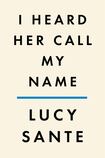
“When I saw her I felt something liquefy in the core of my body. I trembled from my shoulders to my crotch. I guessed that at last I had met my reckoning.” One night in the spring of 2021, about 30 friends of the writer they had known as Luc Sante received an email with the subject line “a bombshell”. Earlier that month Sante had acquired a new phone and tried out the gender-swapping feature of a face-editing app. The result: “a full-face portrait of a Hudson Valley woman in midlife: strong, healthy, clean-living.” Sante’s egg had cracked; it was time for her friends to meet Lucy, and for the 66-year-old critic, historian and memoirist to try to tell what had been hidden since some time back in the Johnson administration. I Heard Her Call My Name (title borrowed from the Velvet Underground) recounts Lucy Sante’s life of immigrant displacement, post-1960s bohemia, tireless and inventive literary work – and a longing unsatisfied till her seventh decade.
What Sante had glimpsed in the Face App image – more gender-switched photographs, at different ages, punctuate the book – was an unlived, impossible life. History was against her but also family: her Belgian Catholic parents adapted poorly to life in New Jersey, and either mocked or suppressed any hint of their child’s sexual or gender identity. (The shade of a stillborn sister, Marie-Luce, also loomed.)
Sante grew up, moved to New York and became a writer at a time when you might think some gender fluidity, or at least a little street-strut androgyny, was possible. She grew her hair at the tail end of hippiedom, attended full-drag performances by the New York Dolls, was present at the birth of punk with Patti Smith and Television, and went clubbing with gay male friends – who to her secret dismay disparaged any “pathetic drag queen” who let down the late-1970s clone fraternity. Thanks to her day job at the legendary Strand Books on Broadway, Sante read all she could about “transsexual” lives, then threw away the evidence of her curiosity.
During those years, she tended a mental canon of women she would like to have been: Françoise Hardy, Lauren Bacall, Marianne Faithfull and later (because she was never attracted to men) various girlfriends for whom Sante tried “at all times to mount a production titled Luc”. Sante is rueful and wise on the strictures and pretence of masculinity, but inevitably I Heard Her Call My Name is a book about being female – idea, fantasy, performance, reality – and about the feeling that for her it may well be impossible. She updates her post-adolescent constellation to include friends, ex-lovers and everyday heroines, and frets that “I do not deserve to be in that number”. Is she too old, too bald, too baritone-voiced? Essaying her transition in relative detachment from contemporary trans communities, she feels she has passed through a portal rather than moved along a spectrum or continuum. This seems in some ways a writer’s (or at least a critic’s) anxiety: am I being too crude or basic or out of date in my conception of myself?
Trinity Library showcases modern greats
Slow Train Coming by Todd Almond: The inside story of Bob Dylan and Conor McPherson’s stage collaboration
Children’s fiction: Five books to delight the younger reader with tales of magical cats, geese and squirrels - and a busy girl called Wanda
Filthy Queens: A History of Beer in Ireland – A quaffable and comprehensive history that leaves the reader with a thirst for more
Sante has spent her career being knowing and sophisticated, negotiating deftly between downtown and high-toned avant-gardes: a writer of rich cultural retrospect. “I’m urban, concrete, disabused.” Her books include Low Life, about the criminal underground of old New York, and The Other Paris, on the city’s lesser known proletarian and artistic scenes. In the essay collections Kill All Your Darlings and Maybe the People Would Be the Times, subjects include Arthur Rimbaud, Georges Simenon, Walker Evans and the vanished subcultures of punk, disco and dub reggae. There are notable women (Sophie Calle, Patti Smith again), but in I Heard Her Call My Name Sante admits what ought to have been obvious all along: writing was a way of disappearing into a super-hip 20th century maleness, not exactly immune or averse to gender ambiguity in art, literature or music, but quite unwilling to admit its own involvement. Sante’s earlier, addictive style slips away here, supplanted by a plainer but more urgent voice.
Is it her real, authentic voice? The Factory of Facts, Sante’s eccentrically impersonal family memoir from 1998, starts with a succession of slightly different and increasingly absurd opening paragraphs, nine false starts at autobiography. The point of course is that there is no single true story to be told – but also, there are always lives unlived. We improvise what we can, including an appearance, or actual experience, of authenticity. As Luc, says Lucy: “I curated my surroundings as a kind of rebus of cultural signs.” Taste was all, even if the tastes in question ran to the ragged or down at heel. She is totally transformed now, and somehow the same: searching for the right dress, the right wig, the perfect transition soundtrack in the early, droning albums of Nico. “Wrap your troubles in dreams, send them all away.”
Brian Dillon’s Affinities is published by Fitzcarraldo Editions, he is working on Ambivalence (on education) and Gone to Earth (on Kate Bush)













